For Germany’s elite speed skaters, the Sportforum in Berlin is an important training facility, as its speed skating rink is the local Olympic training center, the venue for international competitions, and a large number of Berlin clubs also train there. Athletes can count on perfect conditions – including immaculately smooth ice. But this can only be achieved if the climate in the arena is also constantly cool and dry. This is no easy task, as activities in the rink vary greatly: from concentrated training by a few Olympians on the 262- and 440-meter lanes and public hustle and bustle on the 1,800-square-meter ice surface to competitions with 3,500 spectators in the stands. Temperature fluctuations also go hand in hand with changing capacity utilization.
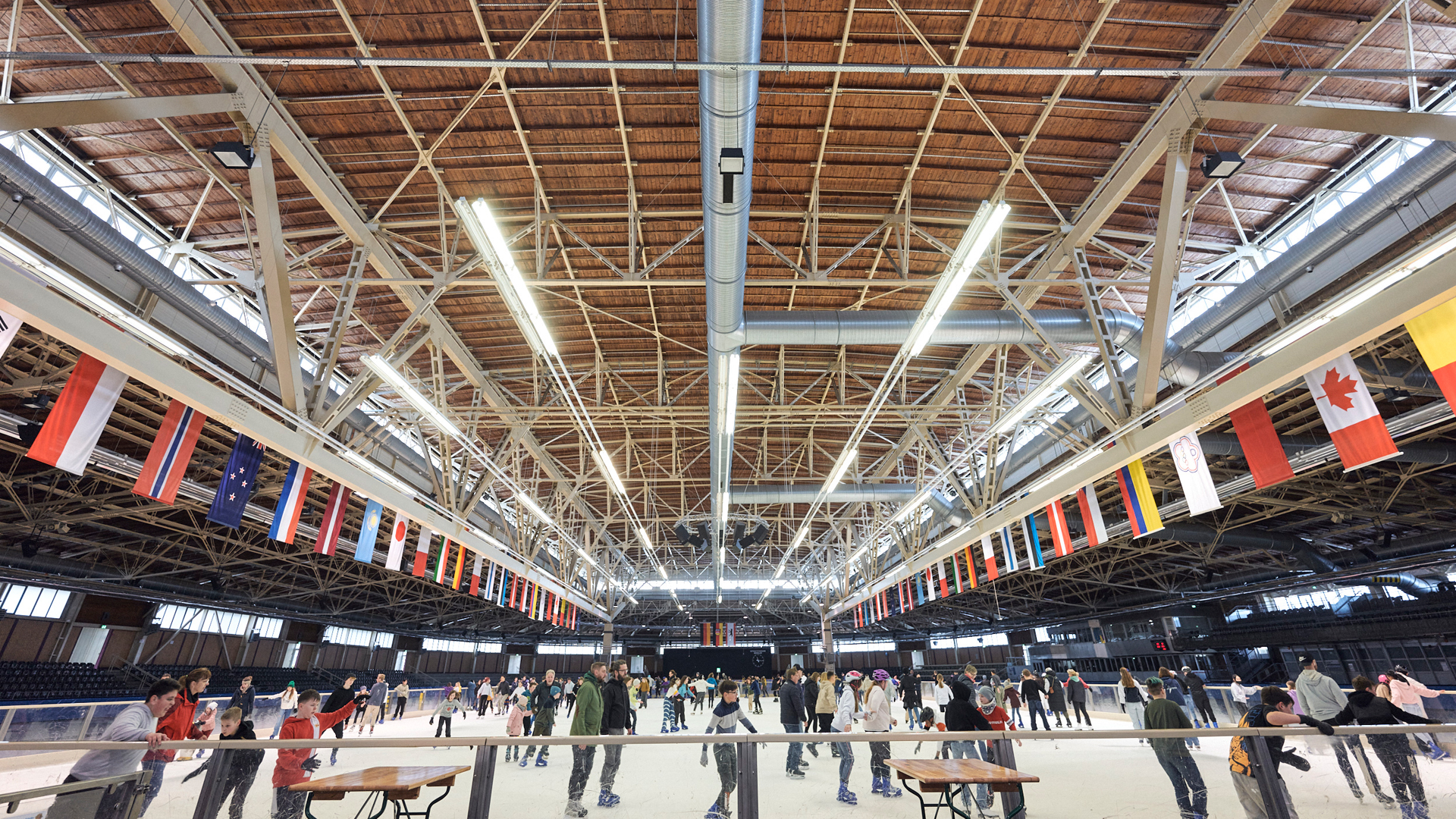
The ice rink was built in 1962 and expanded in 1986.
It was the first indoor speed skating rink in the world at that time.
The total ice surface is 4,400 square meters.
The long track is 440 meters long, the short one 262 meters.
Mirror-smooth instead of a dripstone cave
This creates condensation that can collect on the ceiling and struts and drip onto the ice surface. However, it’s not so good to skate on the beginnings of a dripstone cave. “We need the arena temperature to be eight degrees Celsius so that the difference between the ice and the ambient temperature doesn’t lead to condensation or mist formation,” explains Sven Kuwatsch, technical manager of the Sportforum.
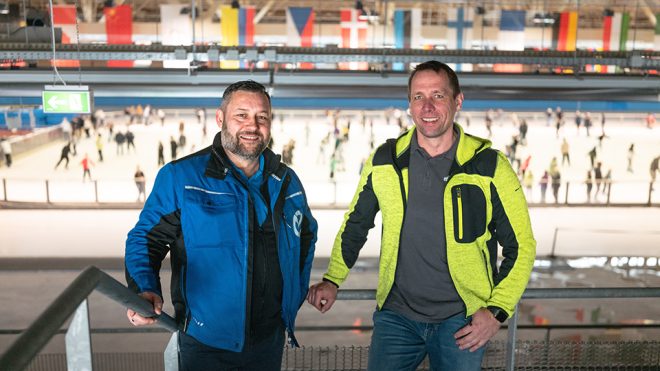
That’s why the ventilation systems in the belly of the arena are working at full speed. “One runs continuously, a second is switched on when there is a lot of activity, and the third is the redundancy in case one of the other two fails,” explains Daniel Bürgel, Customer Service at Munters GmbH, which manufactures and maintains the systems.
Exchanging and drying air
Just circulating the air from the arena would not be enough to prevent condensation, so the systems also dehumidify. To do this, the air from the arena is drawn over a constantly rotating rotor, on which the moisture settles.
To enable the rotor to release the absorbed moisture, a small part of the rotor runs through a regeneration unit in which fresh air heated to around 130 degrees Celsius absorbs the moisture and carries it away to the outside. Because this also heats the process air, it is cooled down again before being blown back into the arena.
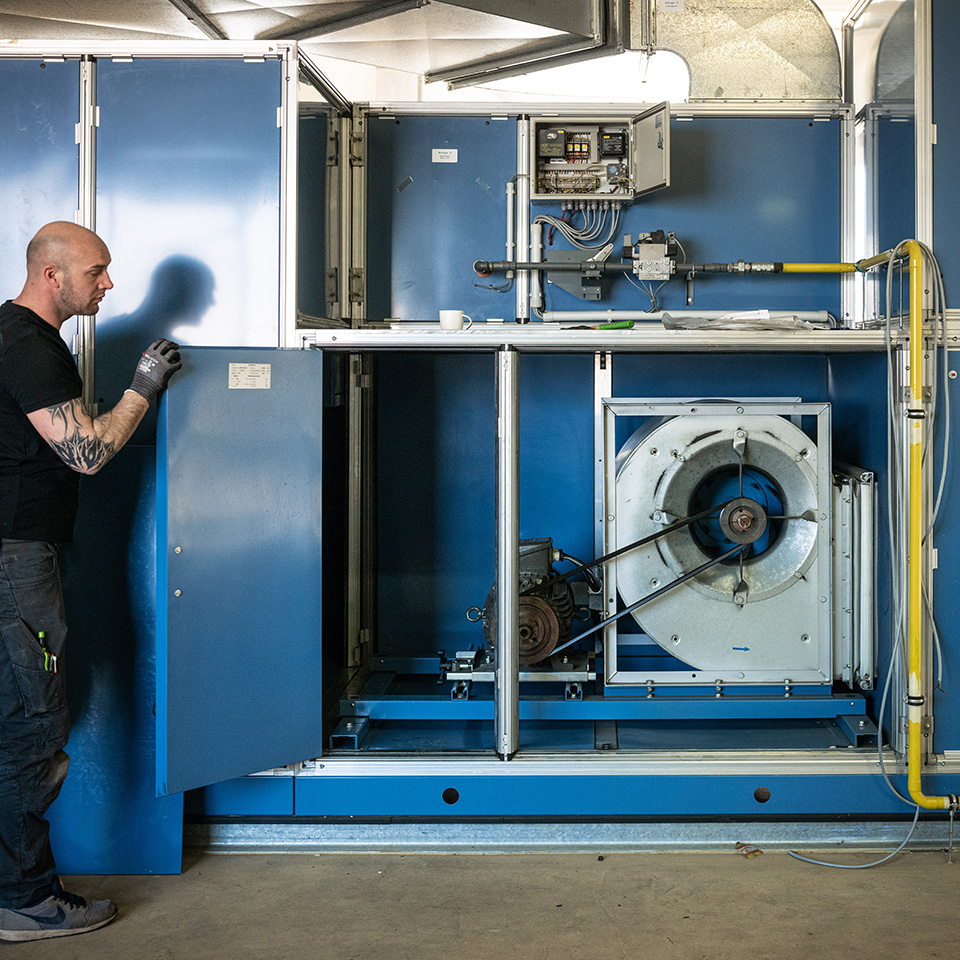
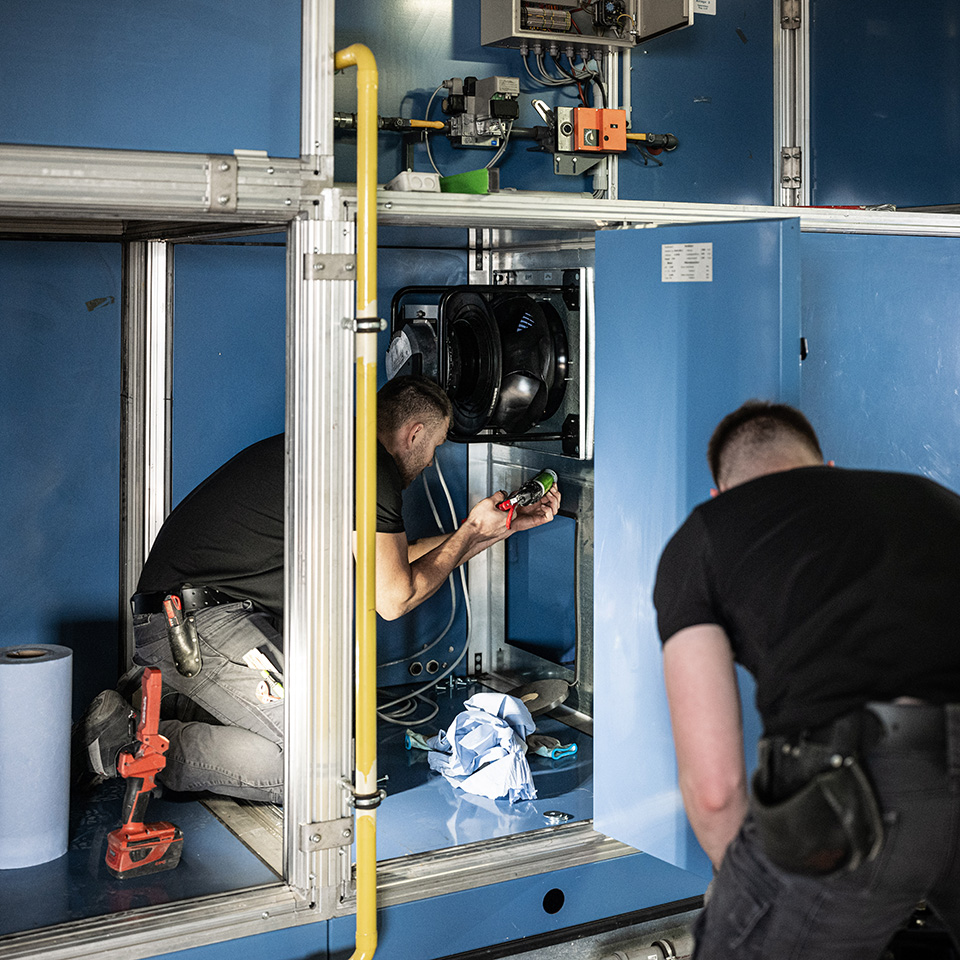
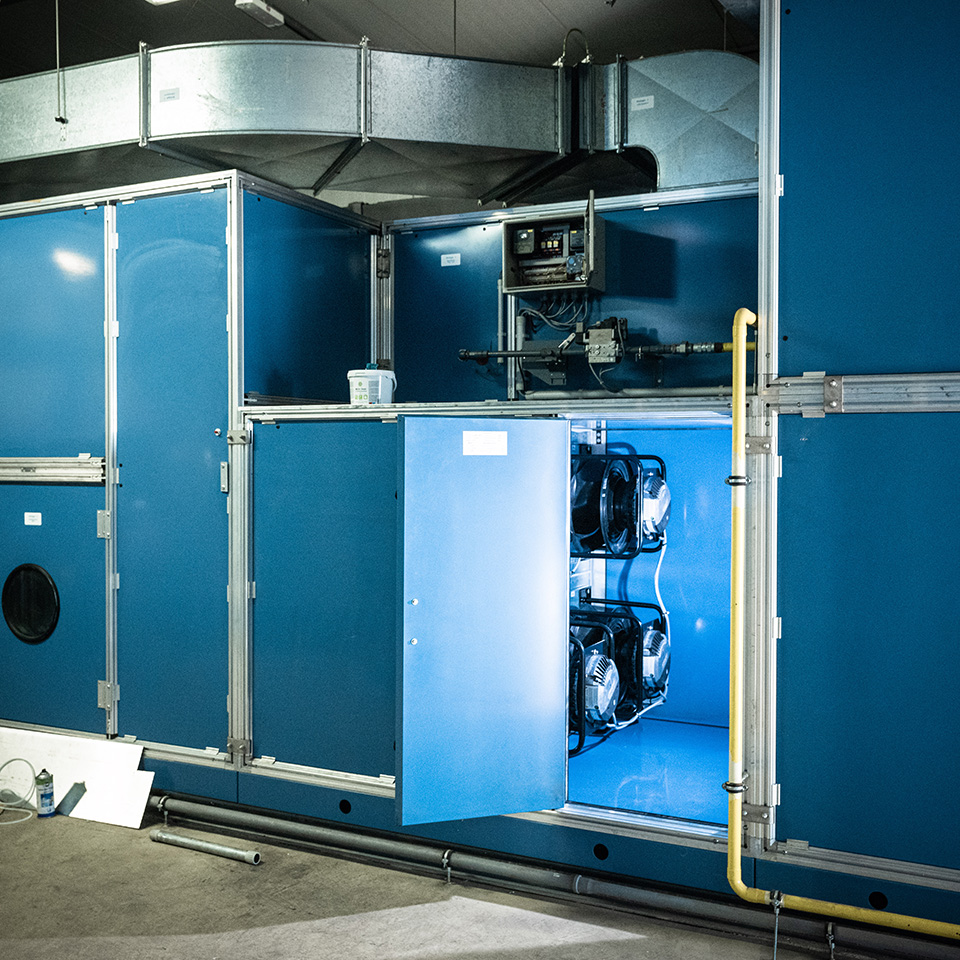
Since the systems were installed in 1998, each process air unit has had a large belt-driven centrifugal fan for the supply and exhaust air. The fans were noisy, inefficient and had already suffered a great deal from 25 years of use in humid air. It was high time to bring the systems up to date. Daniel Bürgel suggested that Sportforum Berlin carry out a retrofit.
“With savings of 30 percent calculated in advance, the Sportforum was also quick to make the decision.”
Daniel Bürgel, Customer Service Advisor North in Service / After Sales at Munters GmbH
Energy savings thanks to retrofit
Shortly before, Bürgel had had a positive experience with a retrofit in a smaller ice rink in Berlin. He works closely with Hamburg-based ventilation specialists Breuell und Hilgenfeldt GmbH, which, as an ebm-papst service center, uses highly efficient EC fans. “It works really well and we can achieve substantial energy savings,” says Bürgel enthusiastically. “With savings of 30 percent calculated in advance, the Sportforum was also quick to make the decision.”
Savings calculated beforehand by B&H:
30 %
Actual savings achieved
after replacing the fans:
52 %
The individual fans were each replaced by a FanGrid with three state-of-the-art centrifugal fans from the RadiPac range. Thanks to the EC motor and optimized blade made of glass-fiber-reinforced composite material, they are extremely efficient. Thanks to their excellent control characteristics, they can be operated as required, which saves additional energy. They are also up to 7dB(A) quieter than their predecessors. “Because three fans operate in one FanGrid, we can also increase reliability,” explains Dieter Hildebrandt, Sales Manager Retrofit Germany at Breuell and Hilgenfeldt.
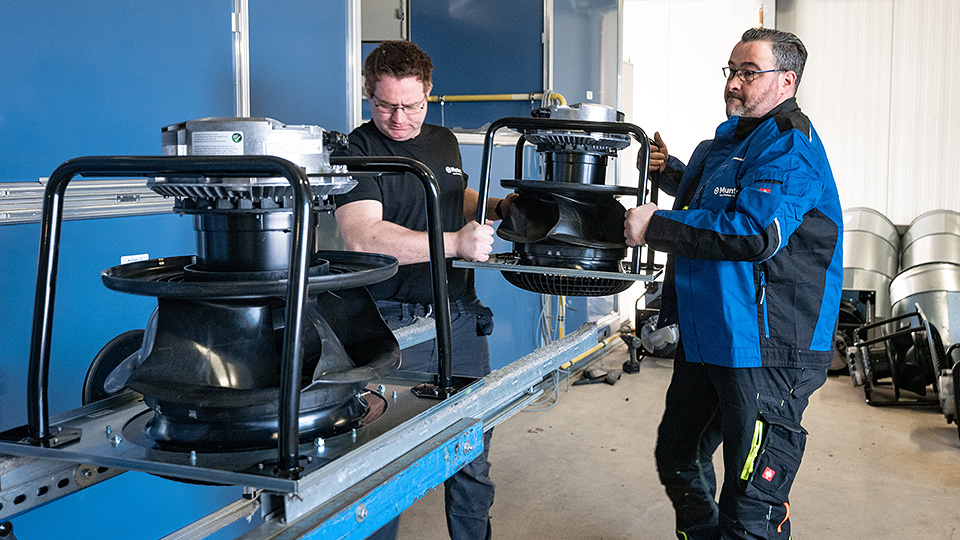
Effective step for greater energy efficiency
Hildebrandt’s initial measurements after replacing the supply and exhaust fans showed total energy savings of 52 percent for the system. However, when the retrofit was performed in the spring, the large outer track had already defrosted, and only the smaller and inner surfaces were still in operation. But major deviations are not expected when the arena returns to full operation in October.
Either way, this retrofit is an important step for the Sportforum on its path to a smaller energy footprint: “We’re looking everywhere right now to see where we can save energy. The retrofit in the speed skating arena is one of these measures – and an effective one at that.”
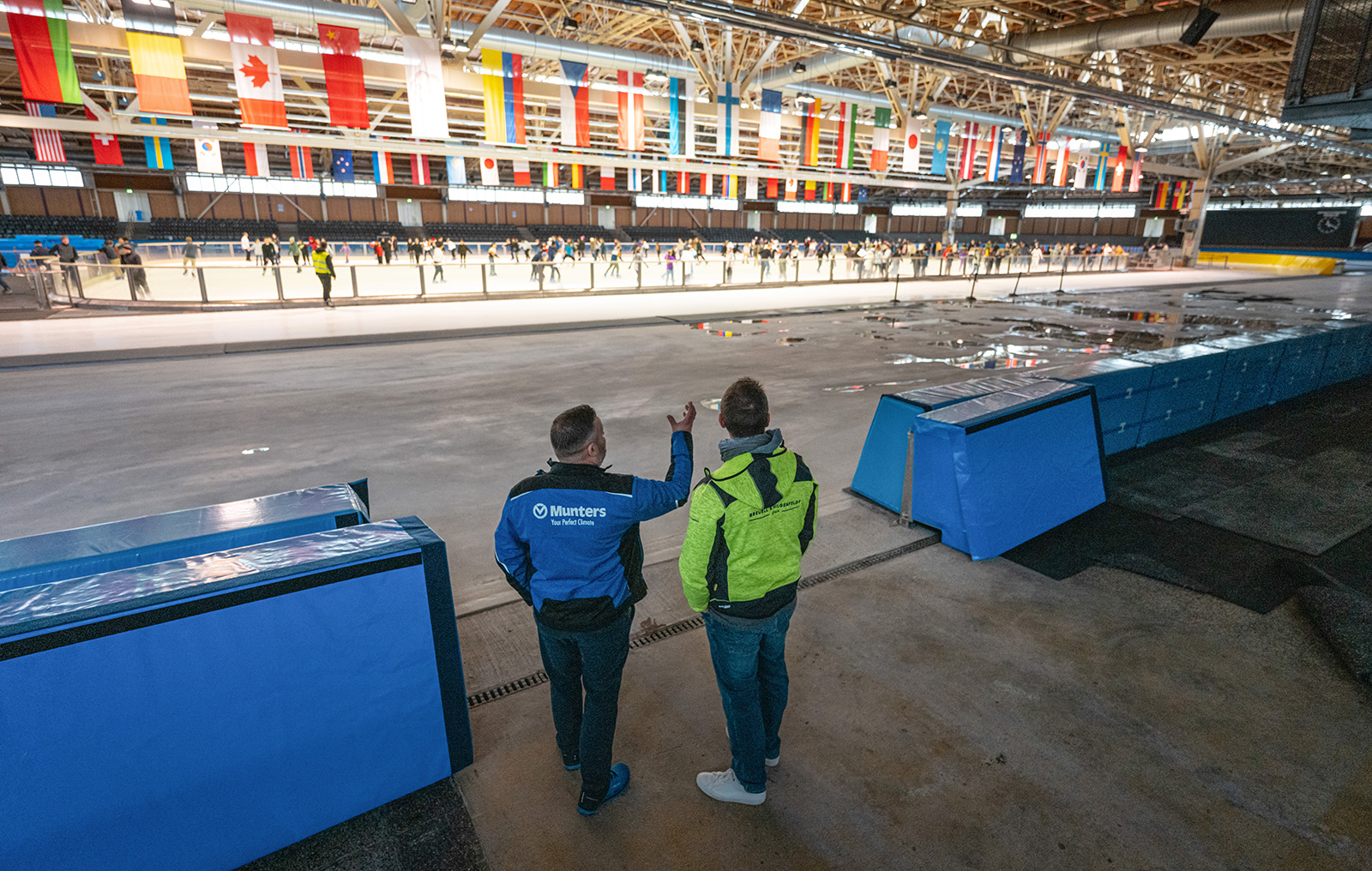

Leave a comment